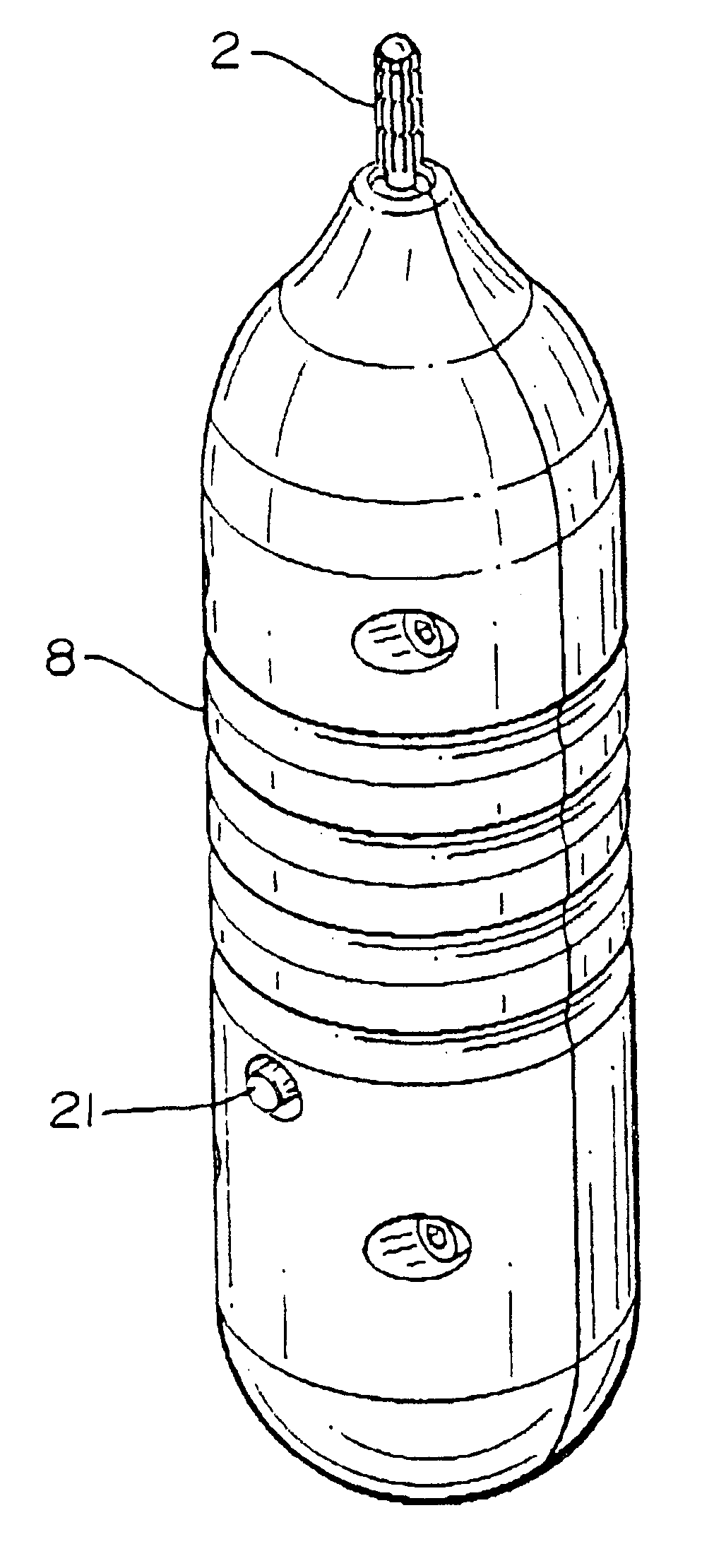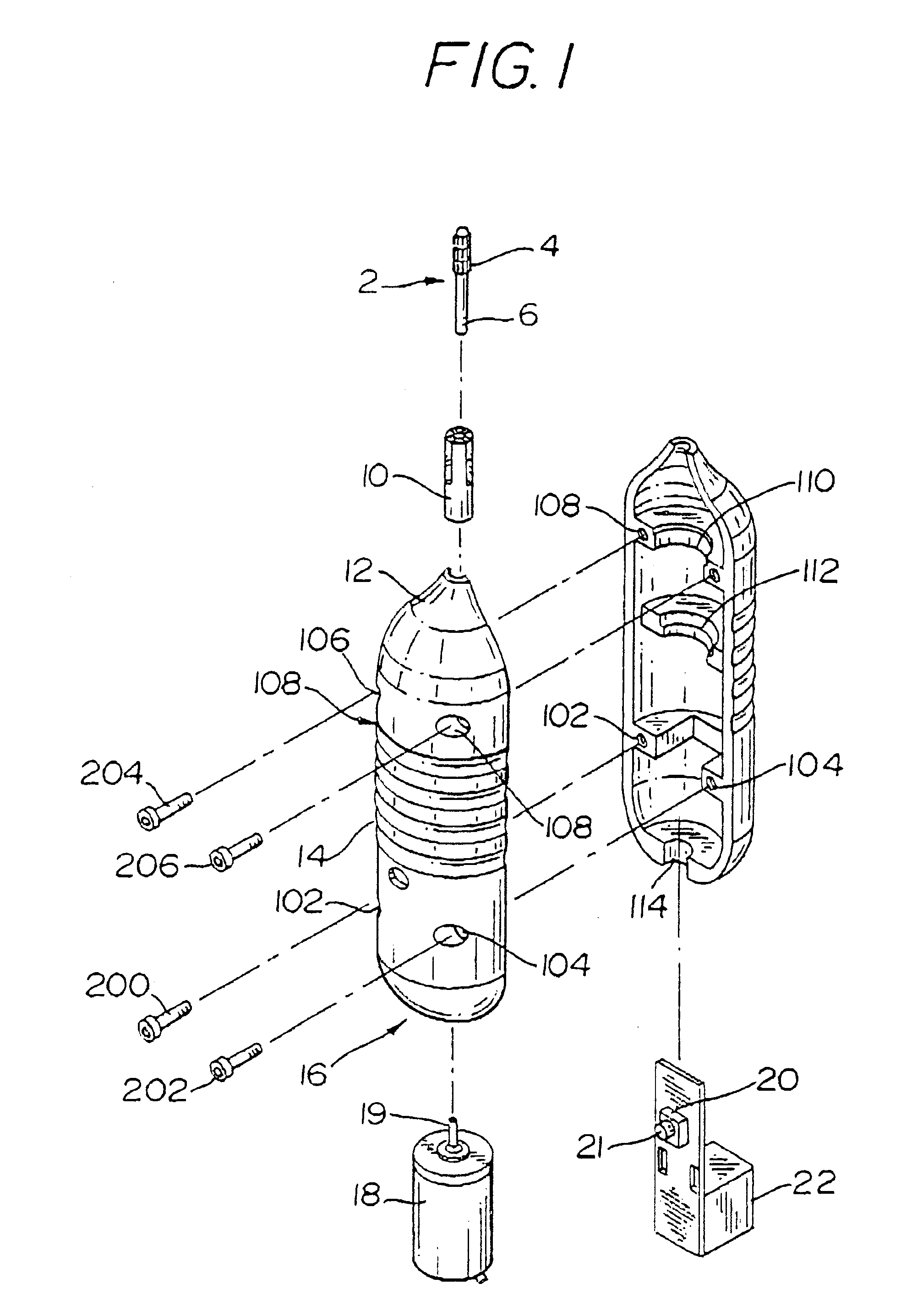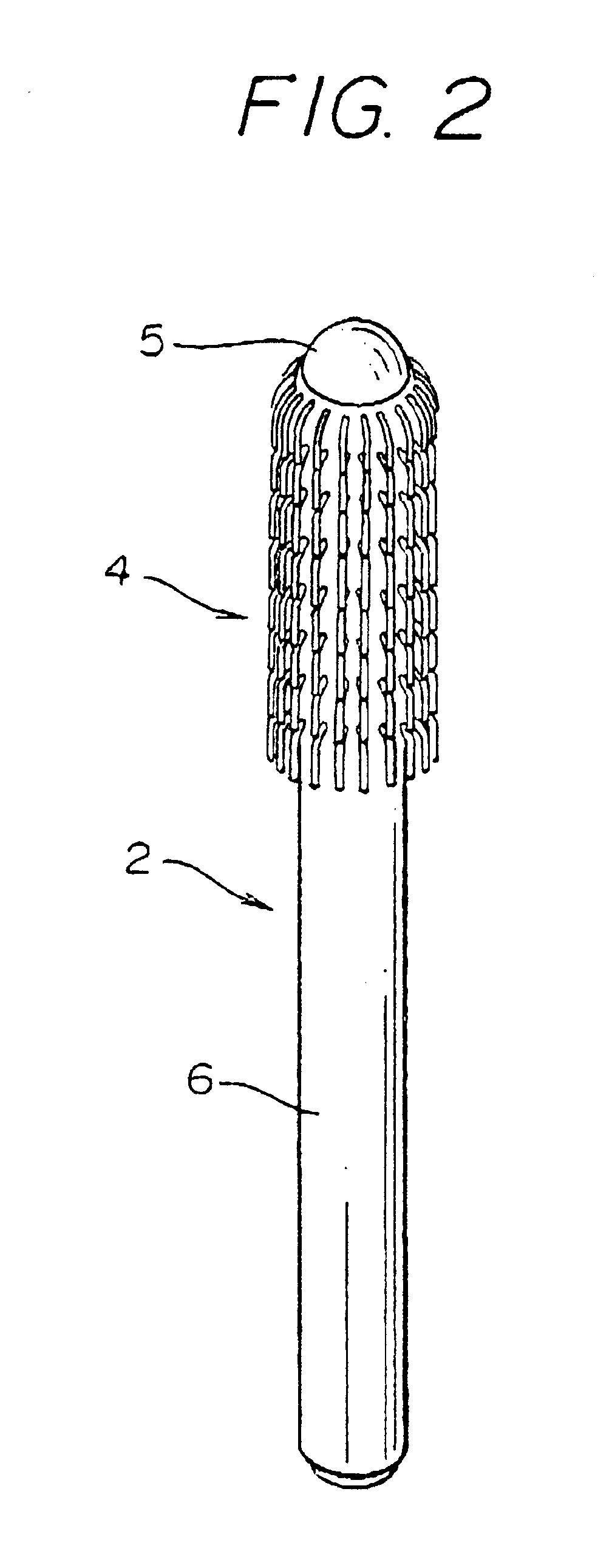Ear cleaning portable rotary device
a rotary device and ear cleaning technology, applied in the field of human and animal body tubular passage cleaning devices, can solve the problems of reducing the ability to provide an adequate examination of the eardrum, no rotary ear cleaning device teaching soft hairs, and prior devices that were not depth sensitiv
- Summary
- Abstract
- Description
- Claims
- Application Information
AI Technical Summary
Benefits of technology
Problems solved by technology
Method used
Image
Examples
Embodiment Construction
In FIG. 1, the instant invention comprises a brush (2) which is constructed of a brush element (4) and a rod (6).
Further details of the brush are shown in FIG. 2. In the preferred embodiment, the brush is made up of hairs (5). Any number of hairs can be used, depending on the brush size desired, although between 1 to over 5000 hairs are contemplated as usable in the preferred embodiment. In a preferred embodiment, between 1 and 2000 hairs are considered usable in the invention. In the most preferred embodiment, 1600 hairs are used on the brush.
The thickness and amount of hairs used will depend on the material chosen as the hairs on the brush. It is contemplated that the hairs can be made from a variety of materials, such as but not limited to, polymeric hairs made from polyethylene, polypropylene or mixtures of polyethylene and polypropylene, or any of the normal alpha olefins, soft horse hair, hairs made from elastomeric material, hairs made from blends of rubber and synthetic, coa...
PUM
 Login to View More
Login to View More Abstract
Description
Claims
Application Information
 Login to View More
Login to View More - R&D
- Intellectual Property
- Life Sciences
- Materials
- Tech Scout
- Unparalleled Data Quality
- Higher Quality Content
- 60% Fewer Hallucinations
Browse by: Latest US Patents, China's latest patents, Technical Efficacy Thesaurus, Application Domain, Technology Topic, Popular Technical Reports.
© 2025 PatSnap. All rights reserved.Legal|Privacy policy|Modern Slavery Act Transparency Statement|Sitemap|About US| Contact US: help@patsnap.com



